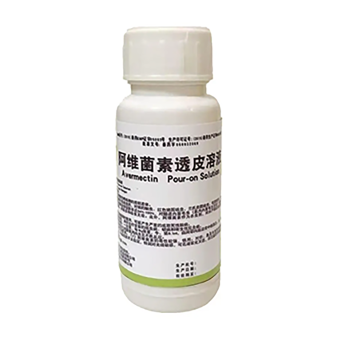- Afrikaans
- Albanian
- Amharic
- Arabic
- Armenian
- Azerbaijani
- Basque
- Belarusian
- Bengali
- Bosnian
- Bulgarian
- Catalan
- Cebuano
- Corsican
- Croatian
- Czech
- Danish
- Dutch
- English
- Esperanto
- Estonian
- Finnish
- French
- Frisian
- Galician
- Georgian
- German
- Greek
- Gujarati
- Haitian Creole
- hausa
- hawaiian
- Hebrew
- Hindi
- Miao
- Hungarian
- Icelandic
- igbo
- Indonesian
- irish
- Italian
- Japanese
- Javanese
- Kannada
- kazakh
- Khmer
- Rwandese
- Korean
- Kurdish
- Kyrgyz
- Lao
- Latin
- Latvian
- Lithuanian
- Luxembourgish
- Macedonian
- Malgashi
- Malay
- Malayalam
- Maltese
- Maori
- Marathi
- Mongolian
- Myanmar
- Nepali
- Norwegian
- Norwegian
- Occitan
- Pashto
- Persian
- Polish
- Portuguese
- Punjabi
- Romanian
- Russian
- Samoan
- Scottish Gaelic
- Serbian
- Sesotho
- Shona
- Sindhi
- Sinhala
- Slovak
- Slovenian
- Somali
- Spanish
- Sundanese
- Swahili
- Swedish
- Tagalog
- Tajik
- Tamil
- Tatar
- Telugu
- Thai
- Turkish
- Turkmen
- Ukrainian
- Urdu
- Uighur
- Uzbek
- Vietnamese
- Welsh
- Bantu
- Yiddish
- Yoruba
- Zulu
Novemba . 18, 2024 08:48 Back to list
Administering Injectable Amoxicillin for Canine Infections and Treatment Protocols
Injectable Amoxicillin for Dogs A Comprehensive Overview
Amoxicillin, a widely recognized antibiotic, is often utilized in veterinary medicine to treat various bacterial infections in dogs. This medication belongs to the penicillin class of antibiotics and is effective against a broad range of gram-positive and some gram-negative bacteria. Injectable amoxicillin is particularly advantageous for dogs requiring immediate treatment or those that may have difficulty swallowing oral medications.
Uses of Injectable Amoxicillin in Dogs
Veterinarians commonly prescribe injectable amoxicillin for conditions such as skin infections, respiratory tract infections, urinary tract infections, and gastrointestinal infections. It can also serve as a preventive measure in surgical settings to ward off potential infections during and after surgery. The injectable form provides a quick therapeutic effect, as it enters the bloodstream rapidly and allows for higher concentrations of the drug to be available, leading to a faster clinical response compared to oral administration.
Dosage and Administration
The dosage of injectable amoxicillin varies based on the specific condition being treated, the dog's weight, and overall health status. A veterinarian will determine the appropriate dosage after assessing the dog’s needs. Generally, the injection is administered subcutaneously (under the skin) or intramuscularly (into the muscle), and it is crucial for pet owners to have this done by a qualified veterinarian to ensure proper technique and monitoring for any adverse reactions.
injectable amoxicillin for dogs

Side Effects and Considerations
While injectable amoxicillin is generally considered safe for dogs, there are potential side effects that pet owners should be aware of. Some dogs may experience allergic reactions, leading to symptoms such as itching, swelling, or difficulty breathing. Other possible side effects include gastrointestinal upset, including vomiting and diarrhea. If a dog exhibits any unusual symptoms following the injection, immediate veterinary attention is essential.
Furthermore, it's important to inform the veterinarian of any pre-existing conditions or medications the dog may currently be taking. Certain dogs, particularly those with a history of allergies to penicillin or other antibiotics, may not be suitable candidates for amoxicillin treatment.
Conclusion
Injectable amoxicillin is a valuable tool in the management of bacterial infections in dogs, providing quick and effective treatment options. Understanding its uses, proper administration, and potential side effects can help pet owners navigate their responsibilities and ensure their pets receive the best possible care. Always consult a veterinarian for the most appropriate treatment plan tailored to the individual needs of your canine companion. Through responsible use and monitoring, injectable amoxicillin can contribute significantly to a dog’s recovery and overall health.
-
Guide to Oxytetracycline Injection
NewsMar.27,2025
-
Guide to Colistin Sulphate
NewsMar.27,2025
-
Gentamicin Sulfate: Uses, Price, And Key Information
NewsMar.27,2025
-
Enrofloxacin Injection: Uses, Price, And Supplier Information
NewsMar.27,2025
-
Dexamethasone Sodium Phosphate Injection: Uses, Price, And Key Information
NewsMar.27,2025
-
Albendazole Tablet: Uses, Dosage, Cost, And Key Information
NewsMar.27,2025













